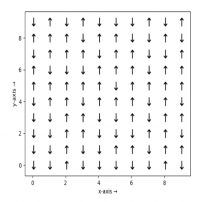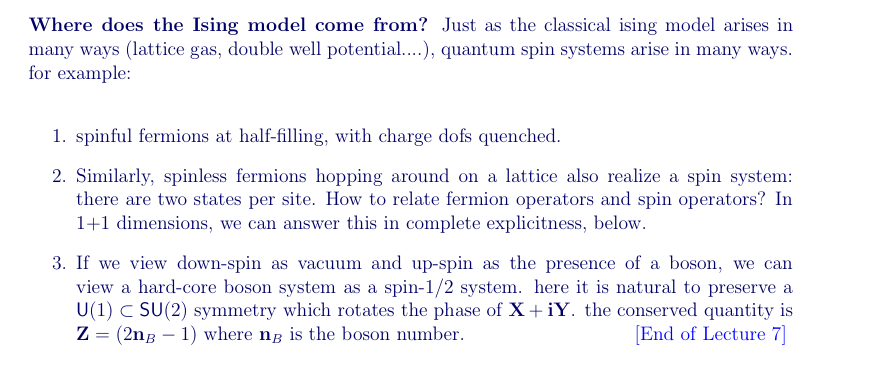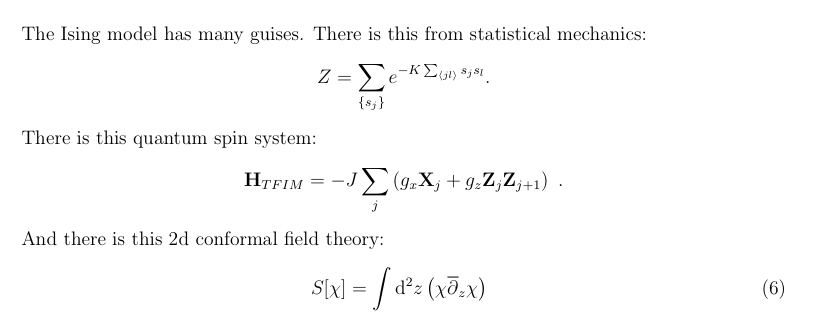Add a new page:
This is an old revision of the document!

The Ising model consists of a linear chain (or lattice) where at each node we have an either an arrow that points upwards or an arrow that points downwards. The force between two neighboring lattice nodes depends on whether they point in the same direction or not.
The Ising model was originally devised as a simplified model of a ferromagnet, but is applicable also in a much broader sense. There is no need to refer to any ferromagnetic setup, but instead the Ising model can be defined completely general.
Recommended Resources
The Ising model is the simplest model with a critical point and thus ideal to understand notions like critical exponents and the renormalization group in a simplified setup.


←-